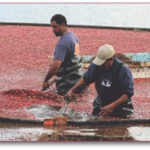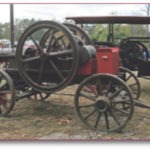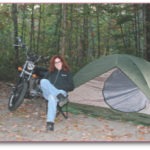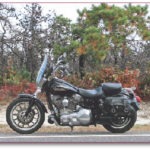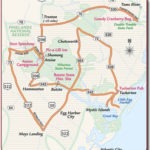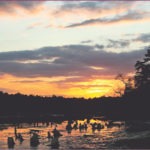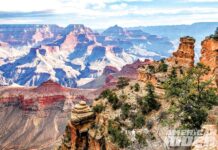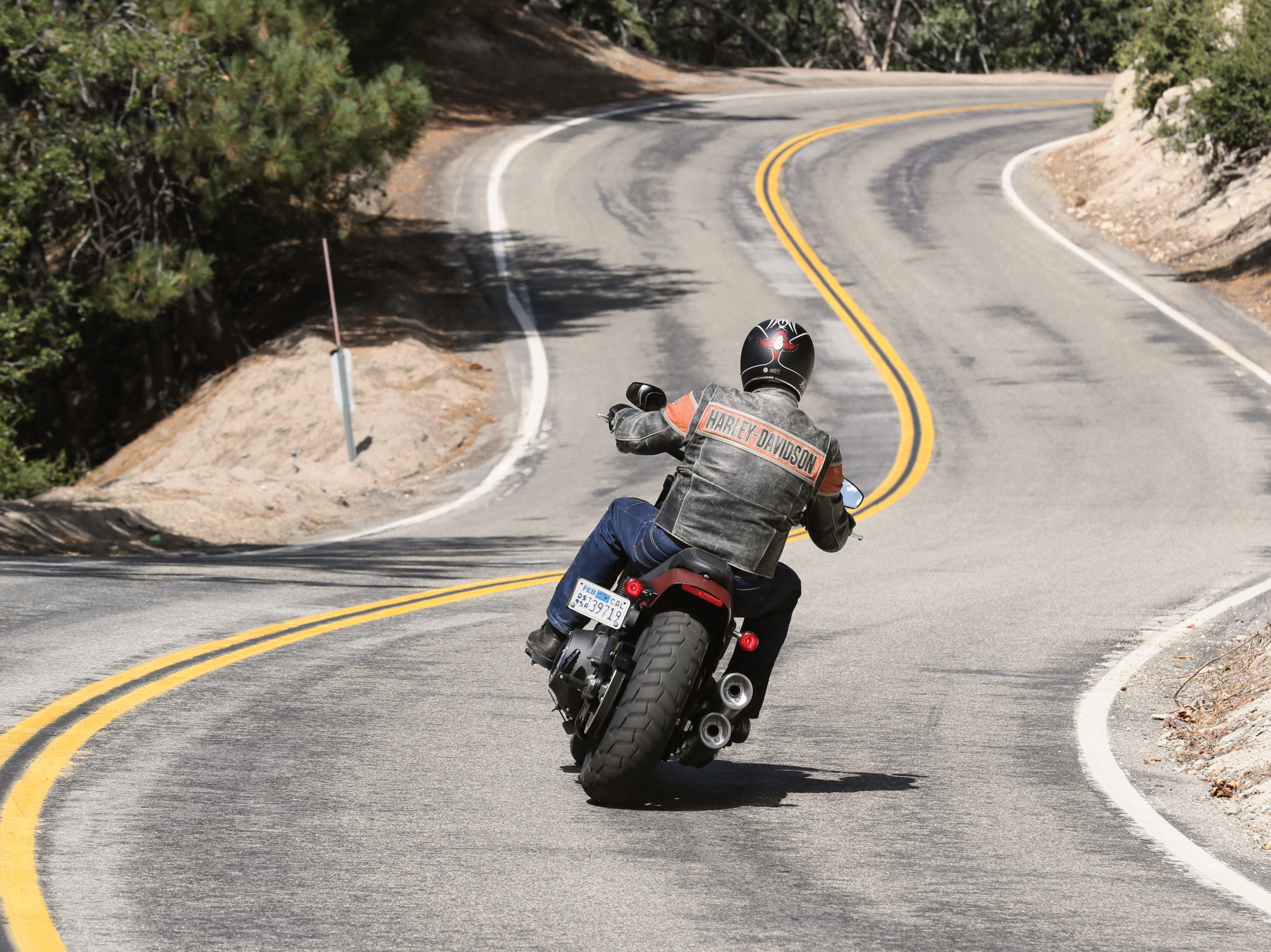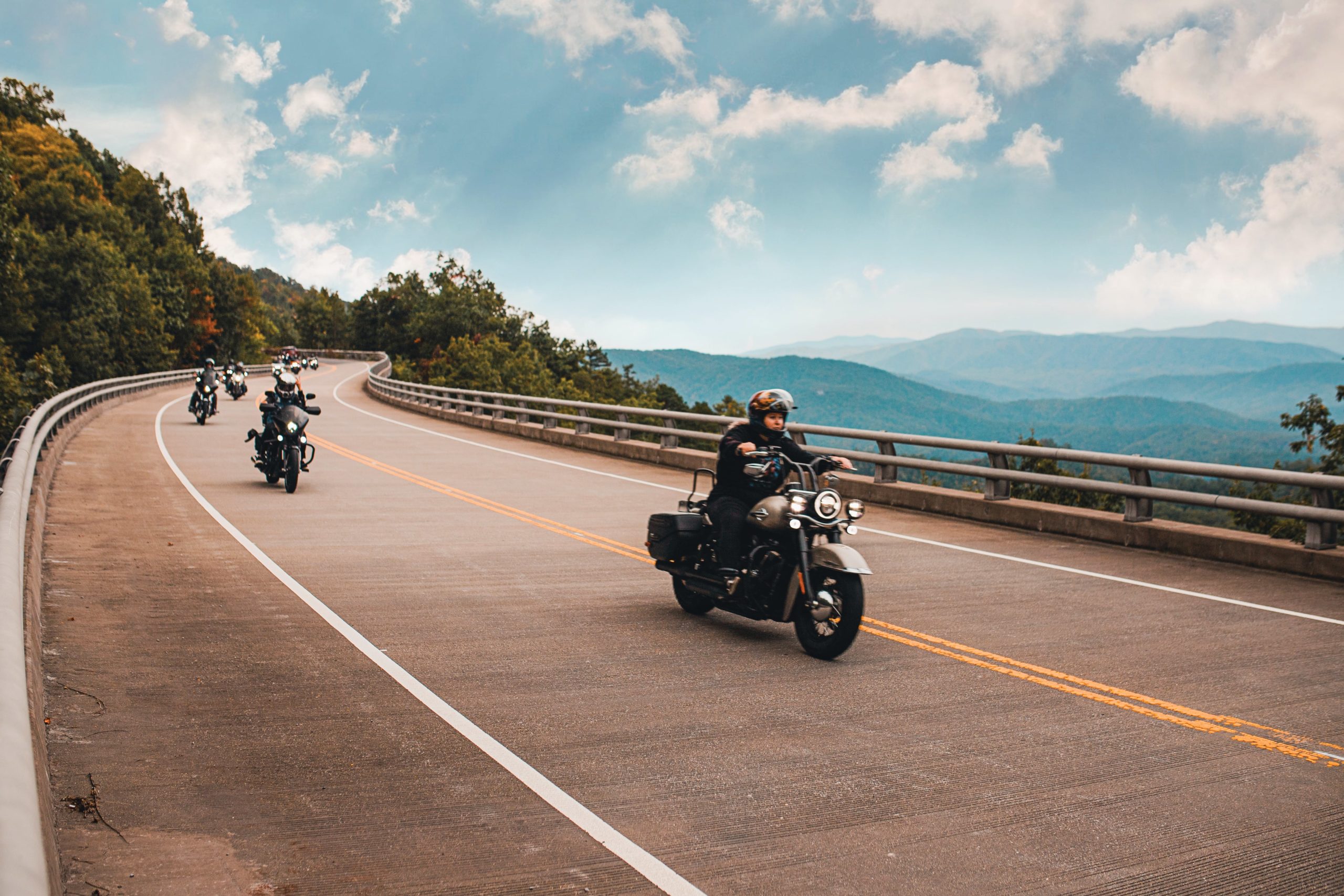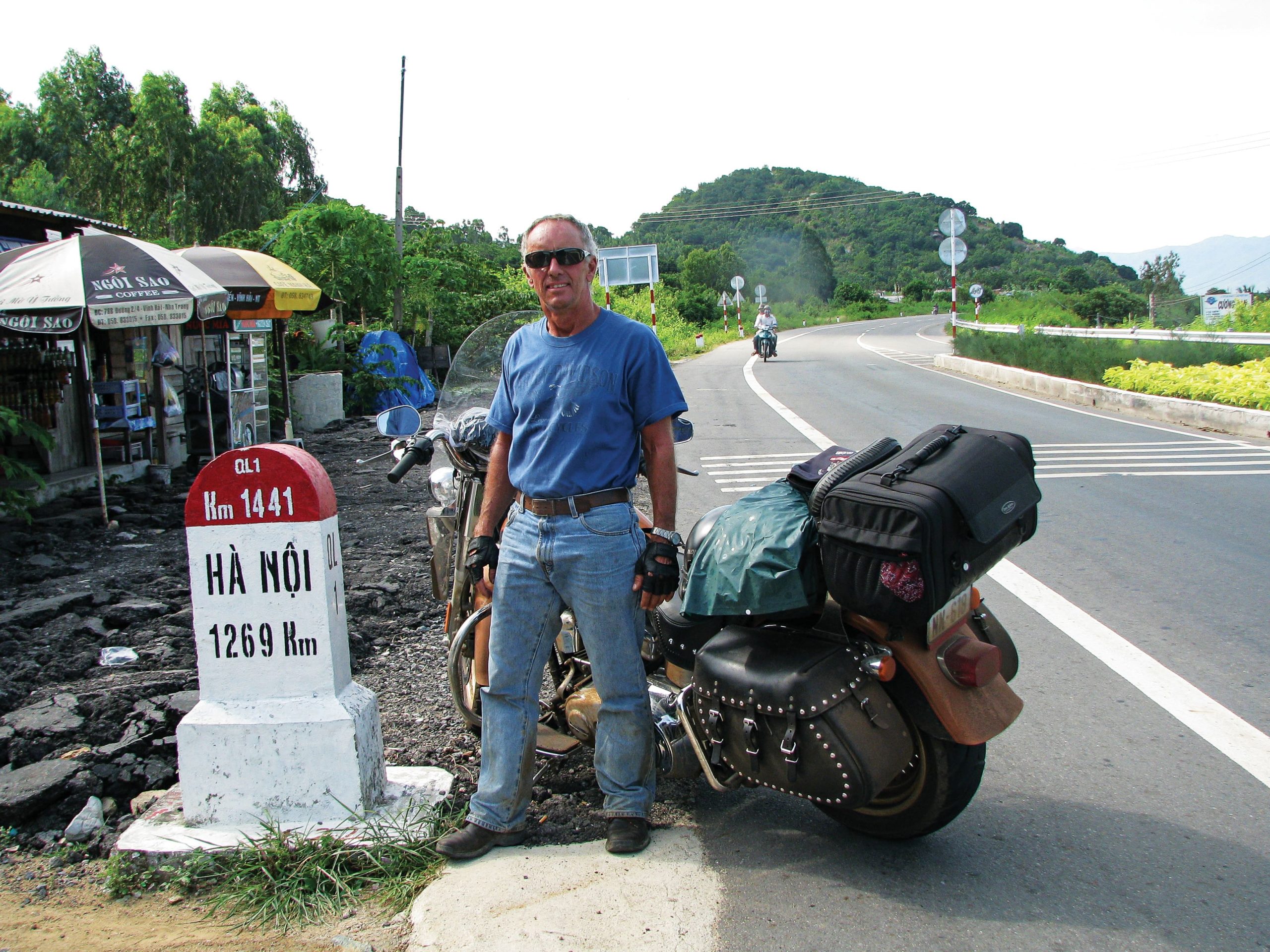Prowling the Pinelands
Cranberries and cold-weather camping
The days were getting shorter, the nights were getting chilly, and our first snowstorm of the season (I didn’t know it at the time) was only days away. I knew I didn’t have much time left this year to take a trip I’d been thinking about for months—an extended ride through the magical, mysterious Pine Barrens of South Jersey.
The Pine Barrens got its name from early European settlers who were displeased that their imported crops didn’t take well to the area’s sandy, acidic, nutrient-poor soil, often referred to as sugar sand. The Pine Barrens, also known as the Pinelands, is a 1.1-million-acre coastal plain comprising the largest body of heavily forested open space on the Mid-Atlantic seaboard. It’s a natural and cultural environment unique to the entire world that includes a pristine and protected estuary, coastal marshes and plants and animals that are found only in this area.
Many people think of New Jersey as a dirty, rude, and ugly traffic- and people-clogged state. It’s the most densely populated state in the nation; however, most of the population is concentrated in the northern and upper central parts. South Jersey, home of the Pinelands, is still, for the most part, quite sparsely populated.
The area was designated the Pinelands National Reserve (the nation’s first National Reserve) in 1978, and 25 years ago, it was designated a United Nations International Biosphere Reserve. It’s a fascinating region from geological, historical, and cultural perspectives. Although I’d ridden through the Pinelands numerous times since I’d moved to New Jersey 15 years ago, it was always on the way to somewhere else, and never as a destination. I was bound and determined to more fully explore this area.
When I left my home in North Jersey late Friday morning, it was about 60 degrees—perfect riding weather. I was pleased to see that on the ride south, the trees were still flaunting gorgeous shades of red, orange, and gold. As I passed I-195, the generally accepted line of demarcation between North and South Jersey, marshes began to appear. By the time I reached Ocean County, sand and cranberry bogs appeared in the landscape. The annual cranberry harvest was taking place this weekend, and this was no small event. New Jersey is the third-largest cranberry-producing state in the U.S. with about 3,500 acres under cultivation, and cranberrying has been a major industry in New Jersey since the 1840s. (Too bad those early settlers didn’t try planting this crop!) At harvest time, the farmers flood the bogs, and then use a water wheel—a mechanical device that looks like a cross between an egg beater and a combine—to loosen the berries from their vines and allow them to float to the surface, ripe for picking.
I entered the no-admission-fee Double Trouble State Park in Ocean County, about 100 miles from my home and just a few miles south of Toms River. The park has several working cranberry bogs, and the sign at the welcome area pointed me about a quarter-mile down one of the walking paths to Gowdy Cranberry Bog. By the time I got there, it was already midafternoon, and the workers had already finished the water wheel process and were finishing that day’s harvest by standing thigh-high in the bog using rakes to bring in the berries. It was quite a sight—the bright red cranberries set against a background of dark green pine trees, brownish-blue bog water and the blue-and-white sky.
I asked one of the workers if they were giving out free samples, and much to my delight, he scooped up a huge double handful of cranberries and presented them to me. I popped one in my mouth and was surprised at the bitter, tangy taste. My new friend Steve saw my slightly puckered expression. “They don’t taste like they do in cranberry sauce, do they?” he laughed. I guess those berries are sweetened up when they’re processed for various comestibles.
Once I’d had my fill of cranberries and cranberry harvesting, I took my time walking the path back through the Double Trouble Historic District, a village that provides a microcosm of the cranberry industry in New Jersey in the early 20th century, complete with family residences, a schoolhouse, machine shop, general store, and sorting and packing house among other structures. Double Trouble (cranberry) Company started up 100 years ago in 1909, and the state purchased the land in 1964 and has leased some bogs to continue cranberry cultivation.
It was time to look for a place to spend the night, so I figured I’d camp out in one of the South Jersey state parks. The park office for Wharton State Forest was in Shamong, about 40 miles southwest of Double Trouble. I asked about primitive camping (only $2 a night!), and was told that there was no way I could ride my motorcycle anywhere near the primitive camping areas. Some could be reached only by canoe, and others required quite a hike. So I opted for a $20-per-night campsite near the Atsion Recreation Area.
The 50-site campground on the northern shore of Atsion Lake was laid out in such a way that I couldn’t see any of my neighbors from my site. After I set up camp, my tummy told me it was time for dinner. I have limited packing space on Dyna and had a choice between loading the bike with cooking gear and food (and only my compact summer sleeping bag), or my big, cushy 600-fill down bag and no cooking gear or food. I chose to pack the winter bag. I figured I could always buy food. At least I had room for my tent, tarp, self-inflating air mattress (I’m getting way too old to sleep on the cold, hard ground), camp chair, and extra clothing. I was even able to fit in my saddlebags some trail mix, power bars and apples I grabbed from my house before I left.
I rode to the Pic-a-Lilli Inn, just a few miles north of the turnoff to the campground. The Pic-a-Lilli plays host to the monthly ABATE of the Garden State meetings, so I was happy to patronize the business, plus they had front-row motorcycle parking. It was quite chilly by the time I got there, but the dining room was warm and cozy. My eight-ounce cheeseburger and side of steamed veggies cost only $7.99. Quite tasty, and what a bargain!
It was dusk when I got back to the campsite, so I grabbed my camera and headed to the lake. The sun was just setting, and I stepped toward the lake to get a good shot, but the shoreline turned into a bog and my boot sunk down about six inches in the mire. All the B movies I’d ever seen about people suffocating in quicksand while mouthing silent screams came flooding back. Luckily, all I had to do was take a step backwards and wipe off my boot in the pine needles blanketing the ground.
I went back to my campsite and spread some maps all over the picnic table, picking out roads to ride the next day. It was quite peaceful; no traffic noise or other sounds of civilization—only a breeze blowing softly across the treetops. It had been a long day, and it was time to hit the sack. Snuggled inside my warm, comfy sleeping bag with a lantern hung from the top of my tent, I read a paperback until I fell asleep. I was quite surprised when I crawled out of my tent around 8:00 the next morning and saw that the thermometer on my bike read only 40 degrees. It must have been in the 30s overnight, but I was snug as a bug in a rug and slept like a baby.
I enjoyed a nice, hot shower, refilled my water bottles with cold spring water and ate a power bar and an apple for breakfast. I waited until it warmed up a bit before I hit the road. By 11:00 it had crept up to 50 but it was cloudy and pretty breezy, and it didn’t seem like it would get much warmer that day.
Continuing south about eight miles to Hammonton, I rode east for a while and then north toward Tuckerton where I turned south onto Great Bay Boulevard. The passageway becomes just a strip of pavement between Little Egg Harbor and Great Bay, with gorgeous views in every direction. I backtracked to Mystic Island (it’s not really an island at all—go figure) that ends at another point along Great Bay. It was quite hazy that day, and I could barely make out the outlines of the tall hotels and casinos of Atlantic City about 15 or 20 miles across the bay. It was getting very chilly and my fingers were numb, so I stopped for lunch at the Tuckerton Pub. I scanned the menu and ordered a heaping helping of comfort food—homemade country chicken pie for $5.99. Another bargain!
After lunch, my fingers finally thawed out so I headed north on Route 539 where there are some fine examples of pygmy pines, a stunted variety of the pitch pine. The pygmy pines continued to line the road along Route 72 going west. I decided to turn south and rode through Chatsworth, a town that many consider the heart of the Pine Barrens. The highway was packed with cars, bikes, and people because the annual Cranberry Harvest Festival was being held that weekend.
Continuing south through Egg Harbor City and on to Mays Landing, I turned northwest and, because it was getting late, I rode east again past Atco Speedway and right on Atsion Road to go back to the campsite. I was quite cold and a little tired from my roundabout 160-mile jaunt (it never did get above the low 50s), so I went back to the Pic-a-Lilli. The $15 I paid for dinner wasn’t in my budget, but I splurged because I wanted to try their almost-world-famous King Wings.
Across from the campground, a farmer was selling firewood on the honor system, so I stuck a fiver into a tin can he’d nailed to a tree, loaded up and returned to my campsite where I made use of the fire ring. That $5 worth of firewood kept me warm for about four hours. By then, the hypnotic flames and the warmth made me quite sleepy so I called it a night.
Sunday morning brought sunshine and wind, and I waited till the mercury hit 55 before I left. Historic Batsto Village, still part of Wharton State Forest, is seven miles east of Hammonton, and it was another place I’d always wanted to explore. The Batsto Iron Works was started on this site along the Batsto River in 1766. Bog ore continued to be produced until the mid-1800s. Batsto then became a glassmaking community, but that didn’t last very long. The property fell into receivership and turned over a few more times before the state purchased it in the mid-’50s. Walking through the village is like walking back through time, only the buildings represent two centuries of iron- and glassmaking. To add to the charm that day, a Country Living Fair was being held featuring artisan crafts, food (only $2 for my lunch, a fine-tasting hot dog!), antiques, quilters, potters, steam engines, antique tractors and other farm equipment, chainsaw art, pony rides, an antique car show, and live traditional South Jersey music, and admission to both the village and the fair was free! I could’ve easily spent the entire day there, but the Cranberry Harvest Festival was calling to me.
I rode the 20 miles to Chatsworth, passing the Ocean Spray processing plant, until I came to a dead standstill on Route 563. This was probably the biggest event of the year, and traffic control was abysmal. I finally parked the bike and strolled among tons of vendors offering all sorts of merchandise and foodstuff, including cranberries in every form imaginable—from jams, jellies, and sauces to candles, soaps, and sachets.
My plan to arrive home again before the sun went down was good in theory but poor in practice. By the time I got back to my house 100 miles north, it was 40 degrees and pitch black outside. What helped warm me up was the realization that I’d managed to spend only $113.32, including just under $35 for gas for the entire 450-mile trip, over the three-day weekend. I was triumphant.
As a footnote, it was a good thing I took that trip when I did. Two days after I got back, a horrifically destructive forest fire began just across the lake from where I camped. The fire burned unabated for five days and as I write this, it’s contained but still smoldering. It burned about 2,000 acres of woods. The road I took to get to the campground was blocked off, surrounding homes were evacuated, and some businesses and schools were closed. The thick smoke made it hard to breathe and visibility was quite poor across the area. This was terrible news, but I was grateful that I listened to that inner voice that said, “Go now!” and that I got to see that area in all its magnificence before fire scarred the unique and beautiful Pine Barrens.


